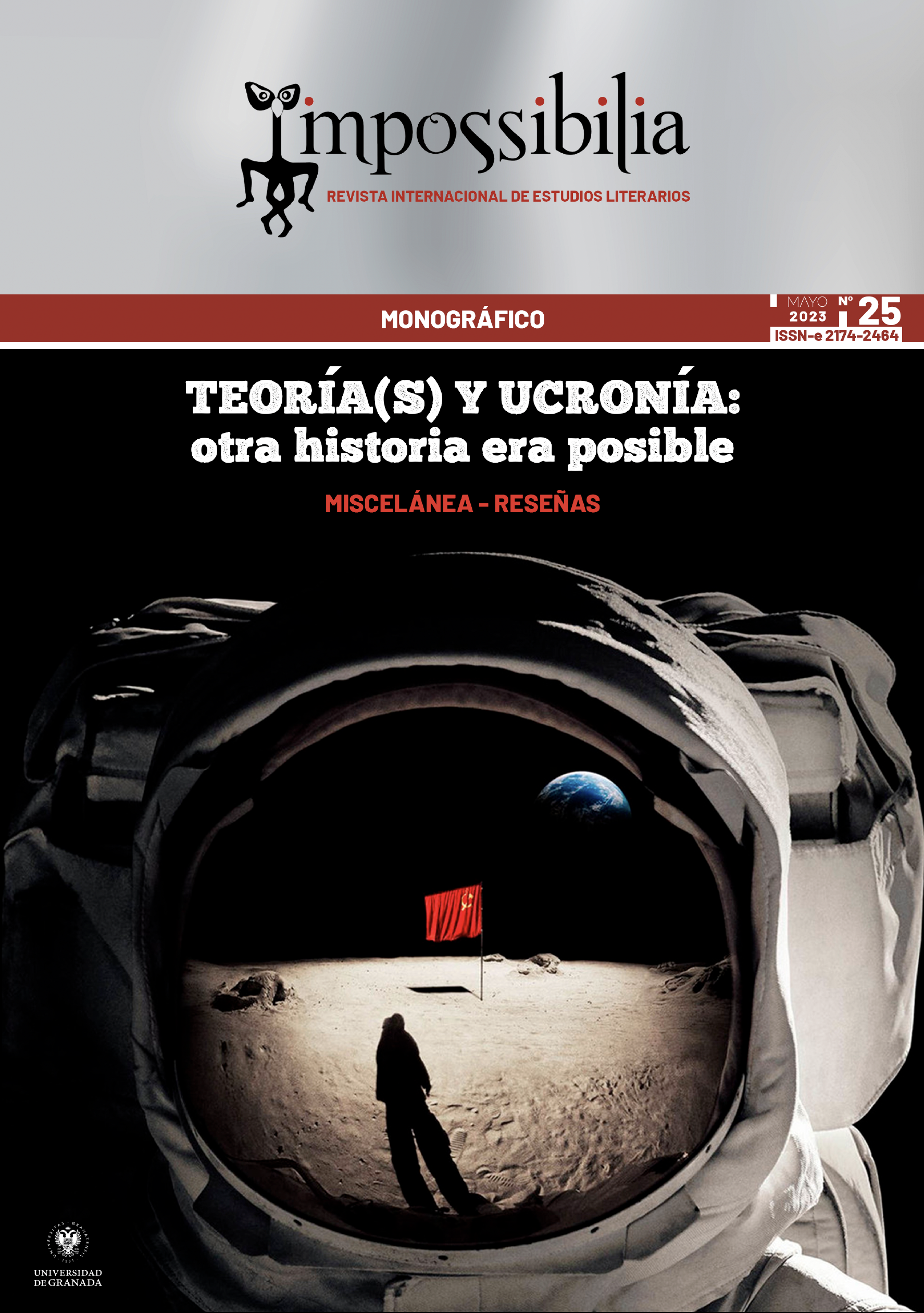Encrucijadas y bifurcaciones. La ucronía (o alocronía) desde el punto de vista de la semiótica
DOI:
https://doi.org/10.30827/impossibilia.252023.26401Resumen
El mecanismo básico de la narración ucrónica como fabulación histórica alternativa es el pensamiento condicional-hipotético (una de las manifestaciones de la semiosis). A partir de esta constatación, estudiamos en este artículo el campo paradigmático de la noción de ucronía, introducimos la variante alocronía y relacionamos ambas nociones con la de modelización temporal (de la que damos tres ejemplos ficcionales). Acudimos, finalmente, a la obra del físico Ilya Prigogine y del semiótico Jurij M. Lotman, quienes reflexionaron, a través de nociones metafóricas como bifurcación y encrucijada, acerca de las múltiples posibilidades de desarrollo (o deriva) de los sistemas dinámicos (físicos y culturales)
Descargas
Citas
AGOSTINO. (2002). Le confessioni (Trad. CARENA, Carlo). Turín: Einaudi.
ASIMOV, Isaac. (1977). El fin de la Eternidad (Trad. SENGESPECK, Fritz). Barcelona: Martínez Roca.
BARES PARTAL, Juan de Dios; ONCINA COVES, Faustino. (2020). Utopías y ucronías. Una aproximación histórico-conceptual. Manresa: Bellaterra.
BORGES, Jorge Luis. (1998). Ficciones. Madrid: Alianza.
LAMPIS, Mirko. (2015). La teoría semiótica de Lotman y la dimensión sistémica del texto y de la cultura. Signa. Revista de la Asociación Española de Semiótica, 24, 393-404.
LAMPIS, Mirko. (2022). Sobre la contingencia. Valencia: Tirant lo Blanch.
LOTMAN, Iuri M. (1988). Clío en la encrucijada (Trad. NAVARRO, Desiderio). En LOTMAN, Iuri M. La semiosfera II. Semiótica de la cultura, del texto, de la conducta y del espacio (244-254). Madrid: Cátedra, 1998.
MUMFORD, Lewis. (2013). Historia de las utopías (Trad. SANROMÁN, Diego Luis). Logroño: Pepitas de Calabaza.
POMIAN, Krzysztof. (1981). Tempo/Temporalità. En Enciclopedia Einaudi. Tomo 14 (24-101). Turín: Einaudi.
PRIGOGINE, Ilya; STENGERS, Isabelle. (2004). La nueva alianza. Metamorfosis de la ciencia (Trad. MARTÍN SANZ, María Cristina). Madrid: Alianza.
RAE. (1992). Diccionario de la lengua española. Vigésima primera edición. En RAE. Nuevo tesoro lexicográfico de la lengua española. https://apps.rae.es/ntlle/SrvltGUISalirNtlle
RAE & ASALE. (2014). Diccionario de la lengua española. Vigésima tercera edición. https://dle.rae.es
RAMÍREZ GALLEGOS, René. (2019). Ucronía. En Diccionario Alice. https://alice.ces.uc.pt/dictionary/index.php?&id_lingua=4
RODARI, Gianni. (1980). Grammatica della fantasia. Introduzione all’arte di inventare storie. Turín: Einaudi.
ROGER, Alain. (2019). Breviario de la estupidez (Trad. TORREGROSA, Gabriela). Barcelona: Subsuelo.
SECO, Manuel; ANDRÉS, Olimpia; RAMOS, Gabino. (1999). Diccionario del español actual. Madrid: Aguilar.
VONNEGUT, Kurt. (1987). Matadero Cinco. O la cruzada de los niños (Trad. GARCÍA DE MIRÓ, Margarita). Barcelona: Anagrama.
Publicado
Cómo citar
Número
Sección
Licencia
Derechos de autor 2023 Impossibilia. Revista Internacional de Estudios Literarios

Esta obra está bajo una licencia internacional Creative Commons Atribución-NoComercial-SinDerivadas 4.0.















